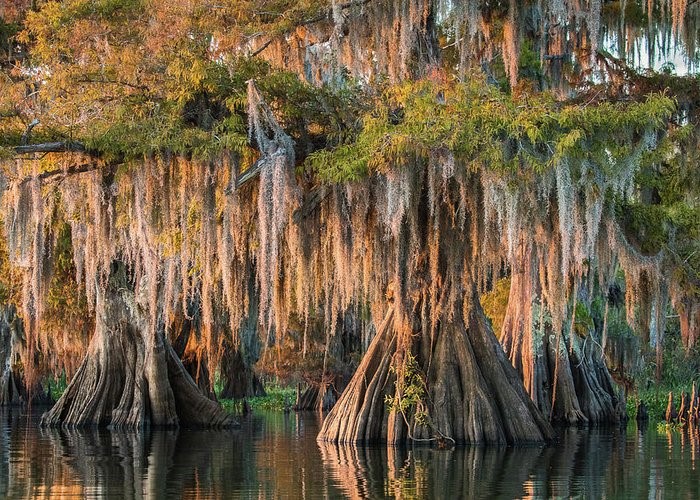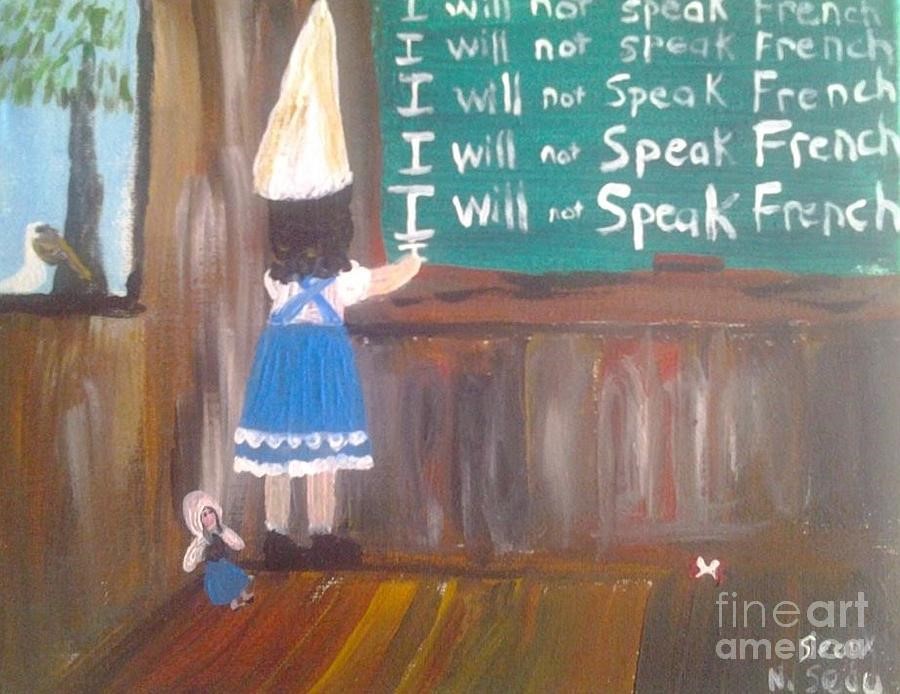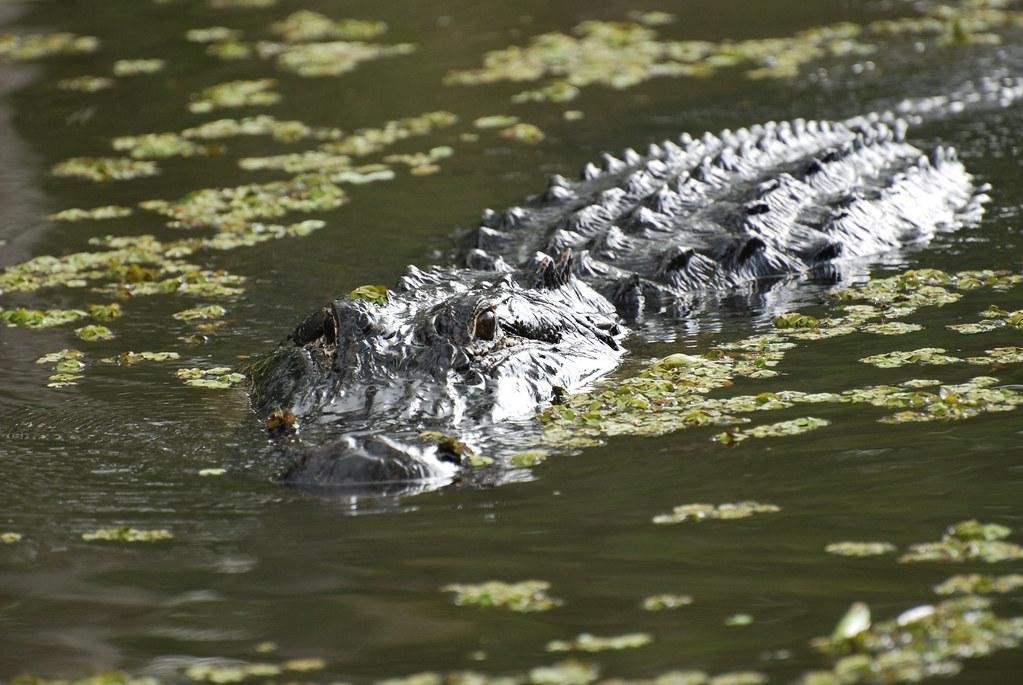
The Arrival of the Acadians in Louisiana – Painting by Robert Dafford (http://www.acadian-cajun.com/memorial.htm)
The Acadian refugees in Louisiana

History books do not tell this, but we know through long-standing Cajun families that the Spanish moss on the cypress trees along the large bayous (a super natural site) gave the first Louisiana settlers from Acadia a collective appreciation that was badly needed; henceforth, let the good times roll. Perhaps, they also concluded that a life in exile does not amass wealth.

The municipality of Gonzales in the parish of Ascension between Baton Rouge and New Orleans is considered to be the capital of jambalaya, a dish akin to Spanish paella. Know that it was Spain that reigned over Louisiana when the Acadians first arrived there. In the United States’ cultural scene, this dish is the signature of Acadiana, that is to say the name and the territory of the Cajun country that the General Assembly of Louisiana officially recognized on June 6, 1971.
A long struggle to speak French
On Wednesday April 29, 2020 during the coronavirus confinement Joyce Babin of Gonzales, Acadiana, published in French on the Cajun French Virtual Table Française website the following wonderful poem entitled Le Tiroir (The Drawer), which she composed a few years ago:
Le Tiroir / The Drawer (a translation from French)
I cleaned out my drawer yesterday,
So much stuff I discarded…you should see it.
Books and brochures that I’ll never read;
Recipes for dishes that I’ll never cook.
Coupons which have expired long ago;
Small toys that are broken, just had to go.
Nuts and bolts, screws and nails.
Pens without ink and pieces of pencils.
Lids of a few things, I don’t remember.
Tools that I used, maybe once, I think.
But now my drawer is neat as a pin, dear.
I think I’ll just leave it open.

Less than a century ago, the 1921 Constitution of Louisiana prohibited speaking French. Copying the phrase “I WILL NOT SPEAK FRENCH” 100 times on the school blackboard, wearing a fool hat, was the first offence punishment. Recurrences resulted in being slapped with a ruler on the knuckles, or worse.
Learning comes from making mistakes. On account of the Cajuns’ joie de vivre (joy of living) which enriches Louisiana immensely, the Constitution was revised and a government agency, called the Council for the Development of French in Louisiana (Codofil), was created in 1968 to promote the use of French. The State finally put “musical paper” in its mechanical piano to use the colorful expression of Ray Bordelon, a storyteller from the parish of Avoyelles. Today, French is in fashion and the oath of allegiance to the flag of the United States is made in French freely.
If Louisiana did clean its storage drawer, it also left it open so that Cajun poetry, culture and folklore, like Mardi Gras, would be appreciated by the world over at their true value. In addition, speaking French today can increase business opportunities.
Descendants of the Acadian exiles
A Cajun (Cadian for some) is simply a descendant of the Acadian exiles.
It is in support of this ongoing renewal that anecdotes of the first Acadian settlements are outlined here in this section dealing exclusively with Louisiana. It follows their establishment dates between 1764 and 1795. Cabanocée, Poste des Attakapas, Fausse Pointe, Côte Gelée, Prairie des Coteaux, Saint-Gabriel, Saint-Louis de Natchez, Rivière Vermilion, Bayou Carencro, Plaquemine Brûlée, Baton Rouge, Bayou Lafourche, Bayou des Écores, and Bayou Terrebonne are 14 heritage gems that should not be forgotten.

In general, Spain, eager to populate its colony acquired from France in 1762, welcomed its new French-speaking Catholic settlers very well. The greatest fear of the Acadians was to live among the alligators (crocodries in cajun). In recognition of this warm welcome, the current Acadiana flag displays the golden tower of Spain on its red field, next to the three-silver fleur-de-lys on the blue field representing the French heritage. The General Assembly of Louisiana State officially adopted with pride the Acadiana flag in 1974. Cajun history is ongoing.


List of the Acadian communities
- Houma (Bayou Terrebonne)
- The first Great Acadian Upheaval Marker in the United States - Port Hudson (Bayou des Écores)
- A major move after two destructive hurricanes in a row - Napoleonville (Bayou Lafourche)
- Name changes according to events - West Baton Rouge (Brusly)
- From the ship Beaumont to Molaisonville - Church Point
- Formerly Plaquemine Brûlé - Carencro (Lafayette)
- A name the meaning of which remains a mystery - Abbeville (Vermilion Bayou)
- A chapel without parish status - Vidalia (Saint-Louis de Natchez)
- A forgiveness to the Acadian people worthy of respect - St. Gabriel
- Monitoring Anglo-Americans above all - Opelousas (Prairie des Coteaux)
- Towards the Cajun Prairie - Broussard (Côte Gelée)
- A marine vocabulary in the heart of the Cajun Prairie - Loreauville
- It all started at Fausse Pointe in a radiant landscape - St. Martinville
- On the former hunting ground of the Atákapas - Convent
-Cabanocée on the Acadian Coast in Cajuns’ Country
